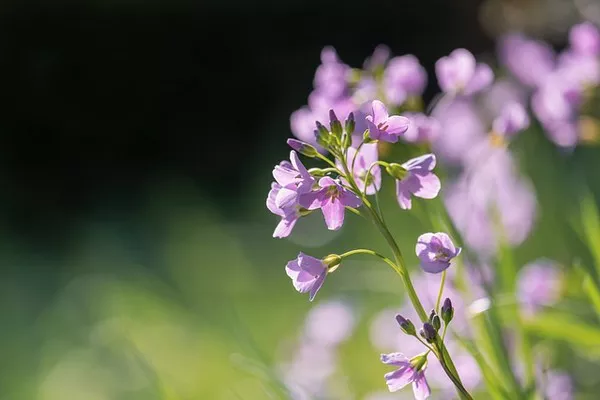Flowers, adorned with their vibrant colors and enchanting fragrances, are not only a sight to behold but also play a crucial role in the reproduction of countless plant species. This fascinating process, known as pollination, involves the transfer of pollen grains from the male reproductive organs (anthers) to the female reproductive organs (stigma) of flowers. In this article, we delve into the captivating world of pollination, exploring the various methods employed by nature’s floral matchmakers and their profound impact on biodiversity and ecosystems.
The Importance of Pollination
Pollination is an indispensable process that ensures the perpetuation of plant life on Earth. It enables flowering plants to reproduce sexually, leading to the production of fruits and seeds. These fruits serve as a vital food source for numerous animal species, sustaining wildlife and facilitating ecological balance. Moreover, seeds disseminated through various means, such as wind, water, or animal dispersal, further contribute to the establishment and proliferation of plant populations.
Types of Pollination
Wind Pollination (Anemophily)
Wind pollination is a common method used by many plant species, especially those with inconspicuous, small, and non-fragrant flowers. The absence of showy petals and nectar in wind-pollinated flowers reduces the need to attract pollinators actively. Instead, these plants produce vast quantities of lightweight and powdery pollen that can be easily carried by air currents.
Common examples of wind-pollinated plants include grasses, pine trees, and various cereal crops like corn and wheat. While this method may seem less sophisticated than other types of pollination, it has been remarkably successful and efficient, allowing these species to thrive in diverse environments.
Insect Pollination (Entomophily)
Insect pollination is perhaps the most well-known form of pollination. Flowers that rely on insects for pollination typically possess showy and fragrant blooms that attract these valuable pollinators. The floral features, such as bright colors and appealing scents, serve as cues for insects to locate and interact with the flowers.
Bees, butterflies, moths, and beetles are among the primary pollinators in this category. As insects move from flower to flower in search of nectar and pollen, they inadvertently facilitate cross-pollination by transferring pollen between different plants, ensuring genetic diversity within populations.
Bird Pollination (Ornithophily)
Bird pollination, or ornithophily, is a unique form of pollination observed in certain floral species adapted to attract birds. These flowers tend to be large, brightly colored, and rich in nectar, making them conspicuous to avian pollinators. Birds play a vital role in the pollination of various flowering plants, especially in regions where insects are scarce.
Hummingbirds, sunbirds, and honeyeaters are prominent examples of bird pollinators. The long beaks of hummingbirds, for instance, are well-suited for extracting nectar from tubular flowers, while their fluttering wings help dislodge pollen during their visits.
Mammal Pollination (Zoophily)
Some plants have evolved to rely on mammals for pollination, known as zoophily. Flowers adapted for mammalian pollinators often have a strong scent, nocturnal blooming habits, and large, sturdy structures to withstand the weight of the visiting animals.
Bats and certain small mammals, such as rodents and marsupials, are significant contributors to mammal pollination. Bats, in particular, have coevolved with numerous plant species, and their long, narrow snouts and keen sense of smell make them efficient pollinators, benefiting both the bats and the plants.
Self-Pollination
Self-pollination is a unique phenomenon in which a flower’s own pollen fertilizes its ovules without external assistance. In this process, pollen is transferred from the anther to the stigma of the same flower or a different flower on the same plant. While self-pollination ensures reproductive success even in isolation, it lacks the genetic diversity that cross-pollination offers, potentially limiting the plant’s adaptation and evolutionary potential.
Cross-Pollination vs. Self-Pollination
The contrasting strategies of cross-pollination and self-pollination warrant further examination. Cross-pollination, facilitated by the involvement of external agents like insects, birds, and mammals, offers numerous advantages. Firstly, it promotes genetic diversity by mixing genetic material from different individuals, enhancing the population’s resilience to environmental changes and diseases. Secondly, cross-pollination ensures a more efficient transfer of pollen, leading to a higher rate of successful fertilization. Lastly, it reduces the likelihood of inbreeding, which can lead to decreased fitness and the accumulation of harmful genetic mutations.
In contrast, self-pollination is often seen as a less dynamic and less diverse mechanism. However, it can be a reliable strategy in situations where pollinators are scarce, such as in isolated habitats or adverse environmental conditions. Some plant species have developed mechanisms to prevent self-pollination, ensuring that cross-pollination remains the dominant mode of reproduction.
Conclusion
Pollination, as a fundamental ecological process, underpins the existence and stability of countless plant species and ecosystems. The intricate dance between flowers and their pollinators is a testament to the beauty and complexity of nature’s design. From the subtlety of wind-pollinated grasses to the flamboyance of bird-pollinated blooms, the world of pollination showcases an astonishing array of adaptations and interdependencies.
As we continue to explore and understand the mechanics of pollination, we gain insights into the delicate balance of life on our planet. It reminds us of the profound connections between flora and fauna and emphasizes the importance of conservation efforts to protect both pollinators and the habitats they depend on. In nurturing and safeguarding these relationships, we not only preserve the colorful tapestry of our natural world but also secure the future of life itself.


